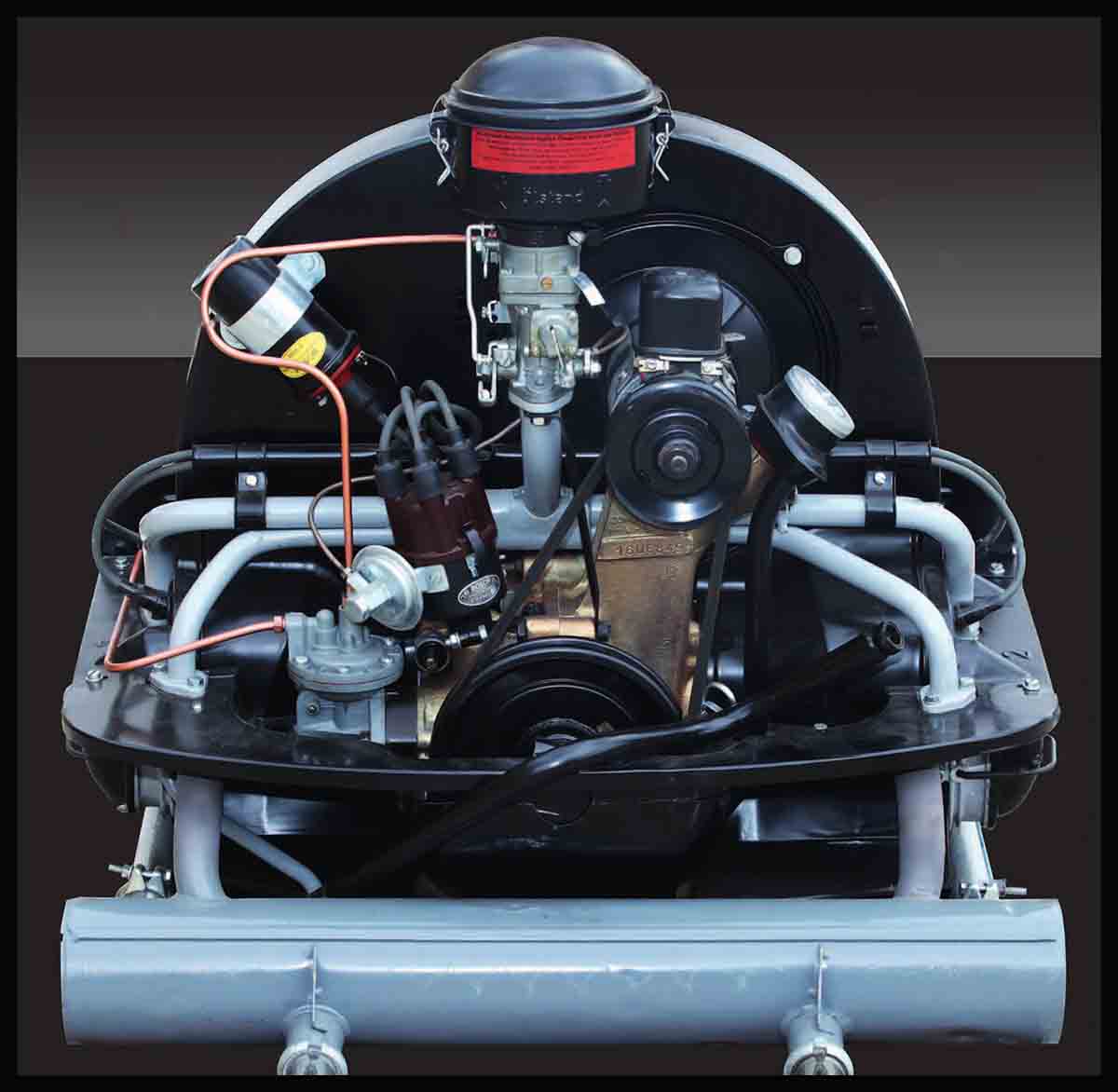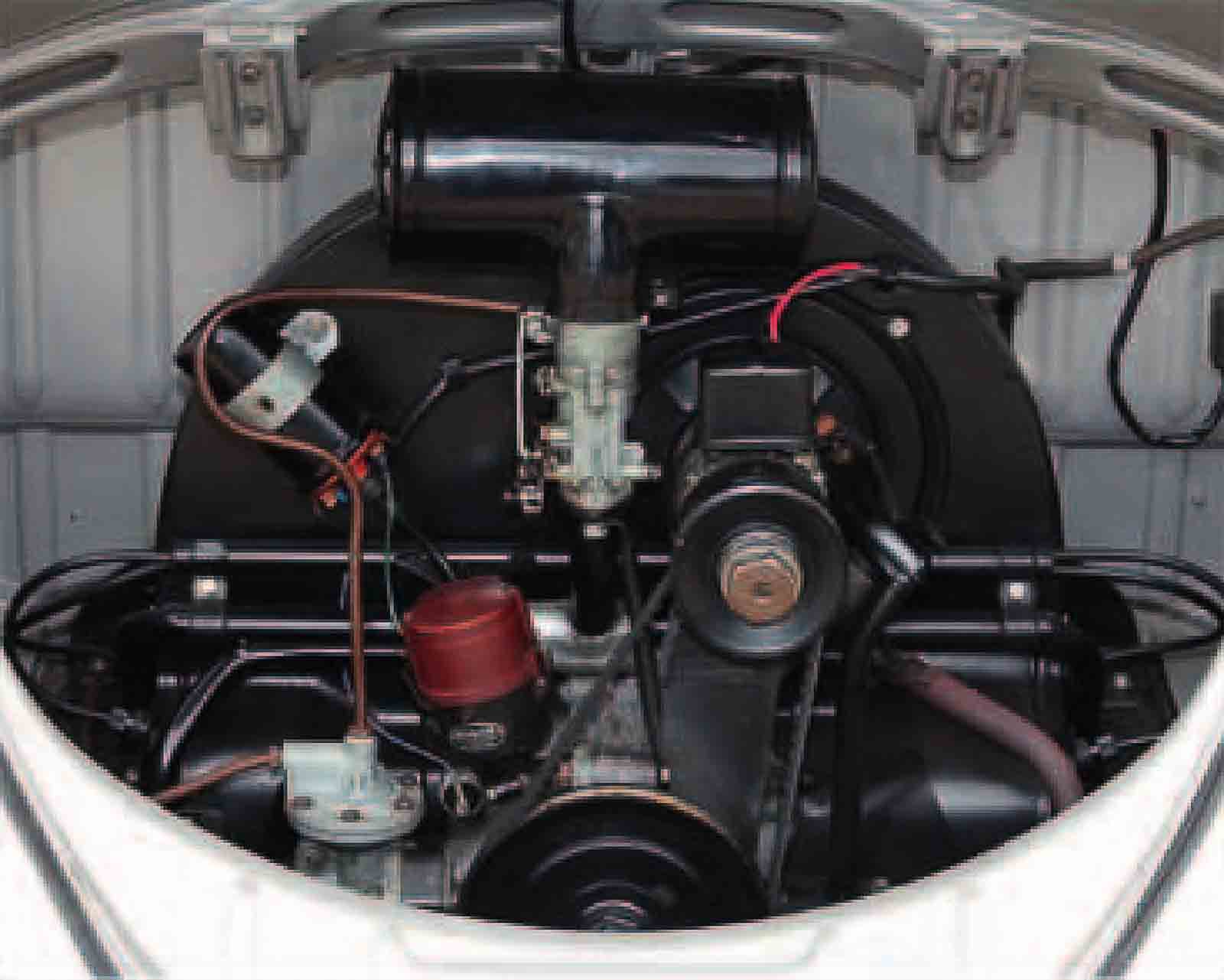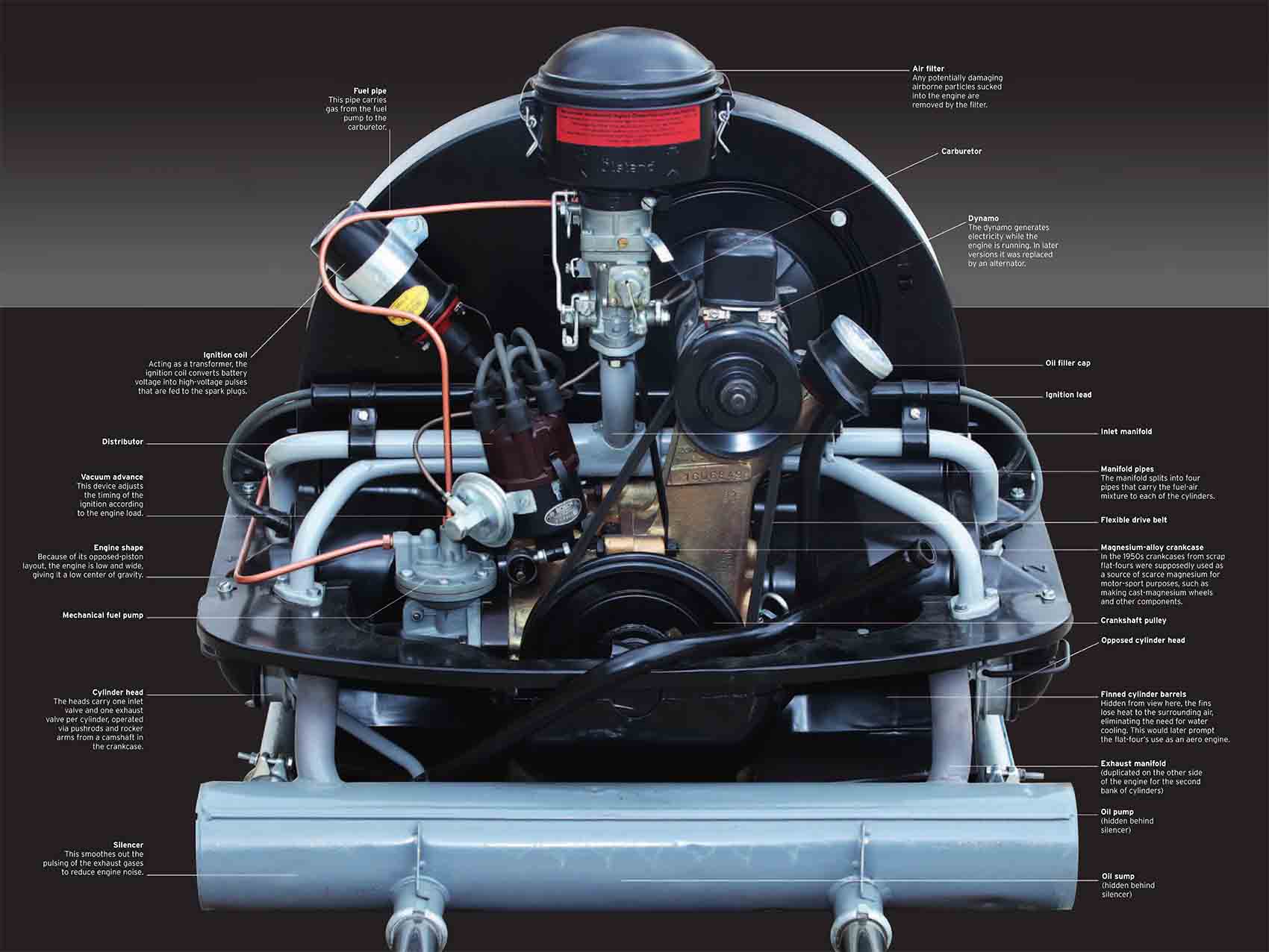
Volkswagen Flat-Four
Commissioned to create a people’s car (Volks Wagen) by Adolf Hitler, Ferdinand Porsche designed an engine that was cooled by air rather than water, saving the weight and complication of a radiator, water pump, and hoses. When car production resumed after World War II, the simple, rugged engine went on to sell in huge numbers worldwide, until manufacture ceased in 2003.
PACKING A PUNCH
A key feature of the engine’s design is properly termed the horizontally opposed layout of its four cylinders, although such a configuration is more often called “flat-four” or “boxer.” Today, the straight-four is more common, but a flat-four has two main advantages: a lower center of gravity (which aids roadholding) and reduced vibration (which enhances refinement). In each pair of opposed cylinders, positioned to either side of the central crankshaft, the pistons move in opposition, like boxers trading punches. As a result, secondary vibrations produced by the unbalanced motion of masses within the engine are significantly reduced.

ENGINE SPECIFICATIONS
| Dates produced | 1936-2003 |
| Cylinders | Four cylinders, horizontally opposed |
| Configuration | Rear-mounted, longitudinal |
| Engine capacities | 1,131 cc (increased to 2.0 liter) |
| Power output | 24bhp @ 3,300 rpm, ultimately 70 bhp |
| Type | Conventional four-stroke, air-cooled |
| Head | ohv actuated by pushrod and rocker; two valves per cylinder |
| Fuel System | Single carburetor |
| Bore and Stroke | 2.95 in x 2.52 in (75 mm x 64 mm) |
| Power | 21.2 bhp/liter |
| Compression Ratio | 5.8:1 |

Not the first flat-four
Although the air-cooled flat-four engine will forever be associated with Volkswagen, Ferdinand Porsche was not the first to recognize its benefits of simplicity, smooth running, and a low center of gravity. The Czechoslovakian car maker Tatra had used this type of engine from the mid-1920s.
It is a quote. The Definitive Visual History Of The Automobile 2011




